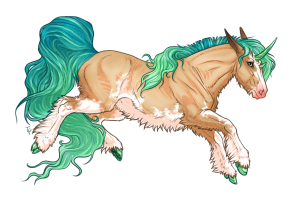 by diatomdude » Sun Dec 24, 2017 12:30 pm
by diatomdude » Sun Dec 24, 2017 12:30 pm
Back to Main Page - Basic Inheritance - Vocab
How Animals Make Colours
Light is a kind of energy, that exists on a spectrum. We see only part of it, usually from about violet/blue to red. When light hits a surface, part of this spectrum is absorbed, and some of it is reflected back, hitting our eyes and allowing us to see.
[insert image here]
When all colours are present, our eyes see it as "white". Usually though, when light hits an object, not all of its energy makes it back to our eyes - some of it is absorbed. When every colour is absorbed equally, you see the object as a shade of black or grey.
[iamge here]
When an object has a colour, it means that it is absorbing some parts of the colour spectrum, but not all of it - what you see is the light that is not absorbed, and is instead reflected back.
There are two basic ways that animals make colours - pigments, and structural colours.
Pigments
Pigments are molecules that reflect a certain colour of light, like a dye or a paint. Most animals have some kind of pigment. They can either make their own pigments, or steal them from other creatures (usually plants) through their diet.
Melanins
Melanins are the most common pigments in animals. Nearly every animal on earth makes melanins - even humans! They are responsible for all dark colours, like blacks and browns, and either all or most of the yellows and reds. Melanins are the only kinds of pigments that most animals can make by themselves, and are usually the only type of pigments that mammals have.
There are two basic kinds of melanin: eumelanin and phaemelanin. Eumelanin causes black to dark brown colours, while phaemelanin makes yellowish to reddish brown colours.
[image here]
Carotenoids
Carotenoids are another kind of pigment. Animals cannot make carotenoids - but plants can! Some animals are able to take carotenoids from the plants they eat (or from eating other animals that ate the plants), and put them into their scales, feathers or skin for their own use. This is really common in birds and invertebrates, but mammals don't do this.
Carotenoids are very bright colours - usually yellows, oranges, and reds. In some cases, they can be green or blue.
[image here]
Because carotenoids come from food, animals that use them can change colour if you change their diet. A good example of this is flamingos - they get their distinctive pink colour from the algae and tiny plankton they eat! If you feed them food that doesn't have carotenoids, they will turn white.
Structural Colours
Structural colours are made because of the physical shape of certain structures in the animals fur, feathers, scales or skin, which make light reflect, refract and/or scatter in strange ways - like the rainbows created by crystals, or on oil slicks.
Tyndall Blue
Tyndall Blue is a type of structural colour caused by tiny air pockets or particles. When light hits these tiny particles or air pockets, blue light is reflected back, while all other colours can pass through unaffected. When you pair this with a dark background to absorb the colours that aren't reflected, you get a bright blue colour.
[image here]
This is what gives a lot of blue birds, like the blue jay, their distinctive colour. It can also make green, if the animals puts a layer of yellow pigment over top of the structural blue. This is what happens in green budgies.
Irridescence
Iridescence is caused when light is reflected off of two different layers in a surface. As the light bounces around, some of it hits itself and cancels out parts of the spectrum. Because of this, the colour looks like it is changes as you move, and may even appear "rainbow" - like a thin layer of oil on water. In birds, this effect is made by having tiny air spaces in their feathers. Other animals, like beetles, do the same thing with minuscule grooves in their hard exoskeletons.
[image here]
Some examples of iridescence in birds are magpies and grackles. Insects like jewel beetles also use this to make colours.
Last edited by
diatomdude on Mon Apr 15, 2019 8:04 am, edited 2 times in total.







